 |
 |
 |
| |
Disparities in Accessing HCV Care under Medicaid Programs Across the US;
Experience from the TRIO Network
|
| |
| |
RReported by Jules Levin
AASLD 2018 Nov 9-13 SF
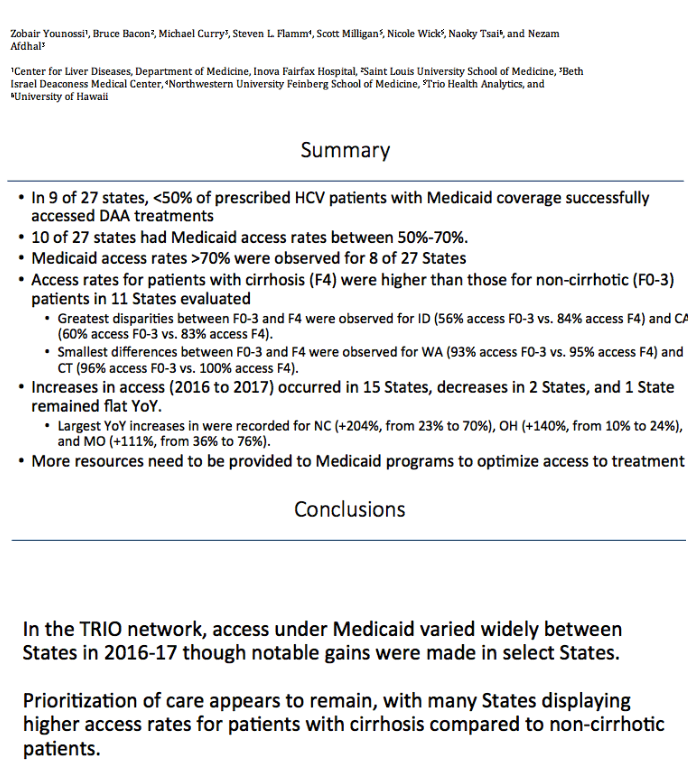
program abstract
Background: DAA therapy for HCV has been shown to be cost effective at the accepted willingness-to-pay thresholds but most States still impose coverage restrictions. In this study we examine access under Medicaid for 27 States since 2016.
Methods: Data were collected from providers and specialty pharmacies through Trio Health's disease management program and are specific to Medicaid-insured patients prescribed anti-HCV therapy in 2016-2017. Access was defined as dispensed DAA and access rates were only calculated for sample sizes of 30+ patients. Cirrhotic status was assigned based on physician-reported fibrosis scores. The assessed data lack identifiers for separation of Medicaid Fee for Service (where the State pays providers directly for each covered service) and Medicaid Managed Care Organizations (where the State pays a fee to a managed care plan for each person enrolled in the plan).
Results: In the TRIO network between 2016-17, in 9 of 27 States, less than half of the prescribed HCV patients with Medicaid coverage successfully accessed DAA treatments: AL (9%), OH (16%), MI (21%), MD (21%), AR (26%), IL (31%), KY (32%), TN (34%), and OR (43%) [Figure]. States with access rates >70% mostly increased year over year (YoY) with the exception of CT which decreased from 97% (2016) to 93% (2017) and AK which remained flat at 74% for both years. Four of the 9 States with the lowest access rates had sufficient sample for YoY evaluation; all 4 (IL, KY, OH, TN) had sizable increases in access (19% increase or higher). Largest YoY increases in access rates were recorded for NC (+208%, from 23% to 70%), OH (+147%, from 10% to 24%), and MO (+109%, from 36% to 76%). Access rates for patients with cirrhosis (F4) were higher than those for non-cirrhotic (F0-3) patients in all 11 States with sufficient sample over the 2-year period, with the greatest disparities observed for ID (56% access F0-3 vs. 84% access F4) and CA (60% access F0-3 vs. 83% access F4). Differences were smallest for WA (93% access F0-3 vs. 95% access F4), CT (96% access F0-3 vs. 100% access F4), IL (30% access F0-3 vs. 35% access F4), and NY (72% access F0-3 vs. 79% access F4).
Conclusion: In the TRIO network, access under Medicaid varies widely between States though notable gains have been made in select States. Prioritization of care appears to remain, with many States displaying higher access rates for patients with cirrhosis compared to non-cirrhotic patients.


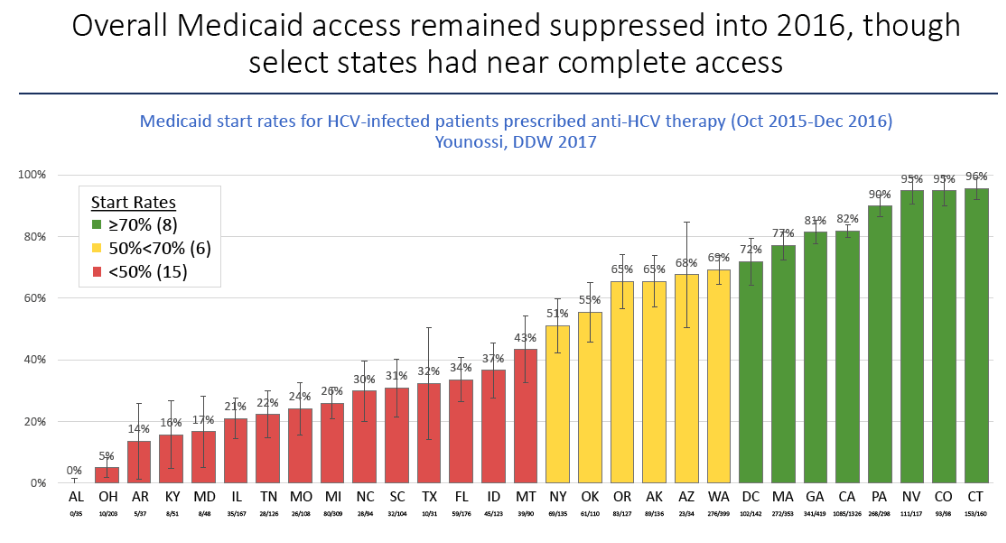
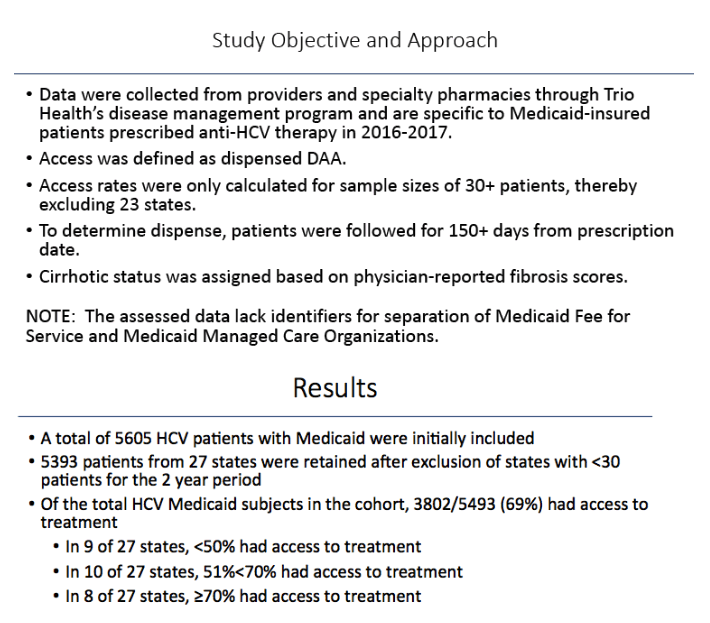
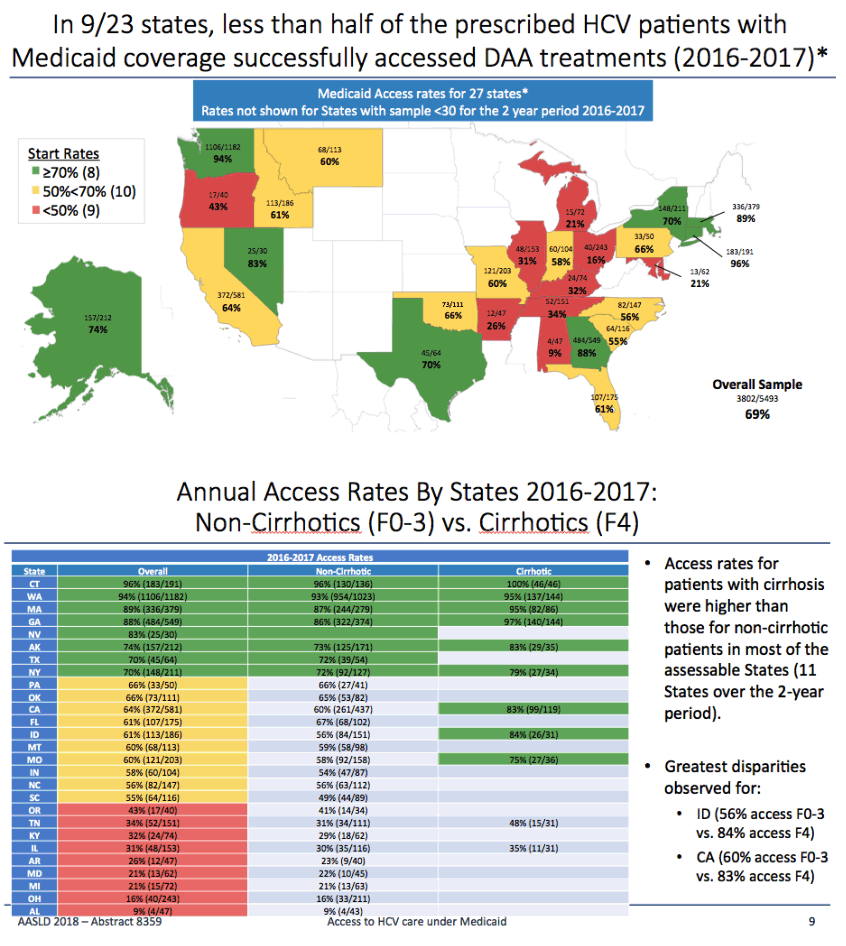
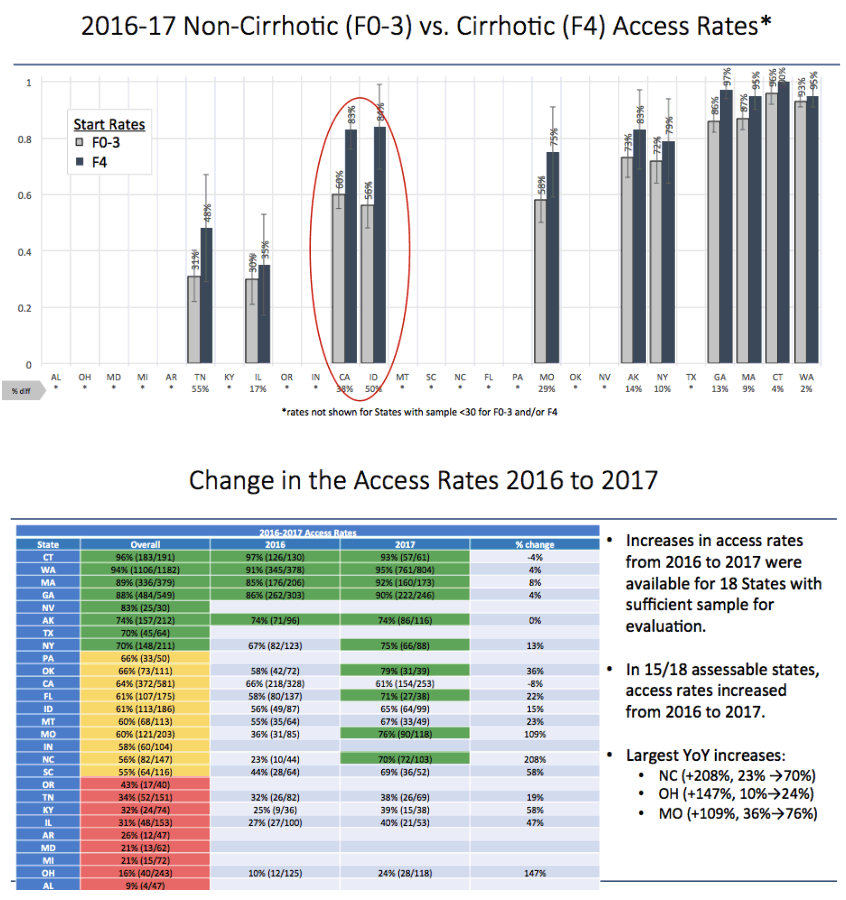
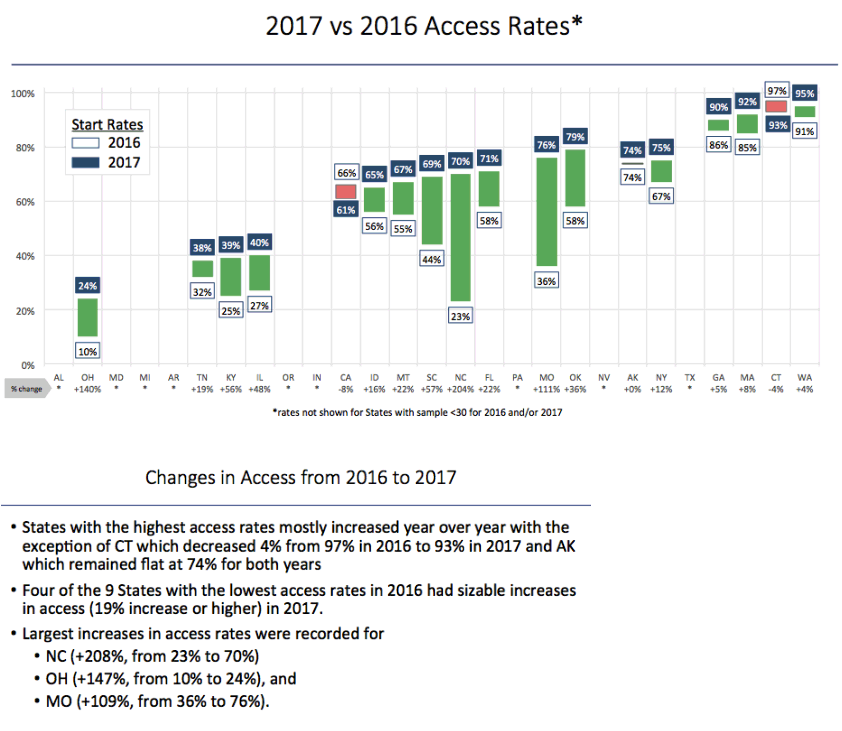
|
| |
|
 |
 |
|
|